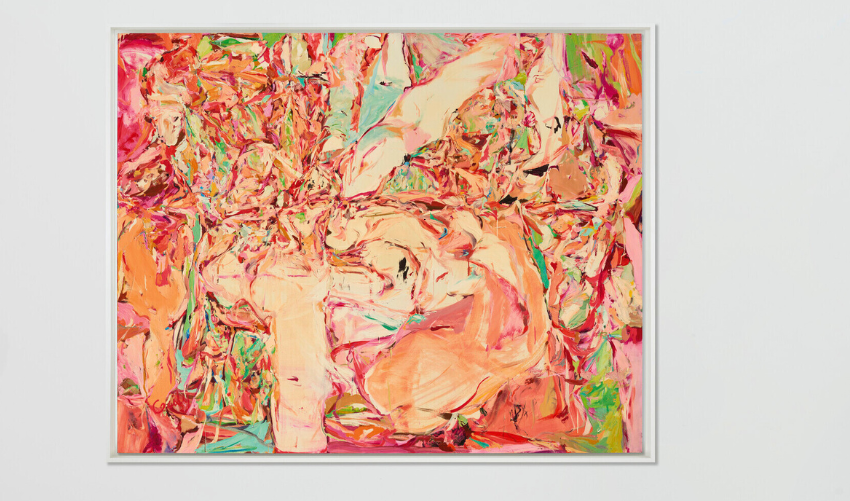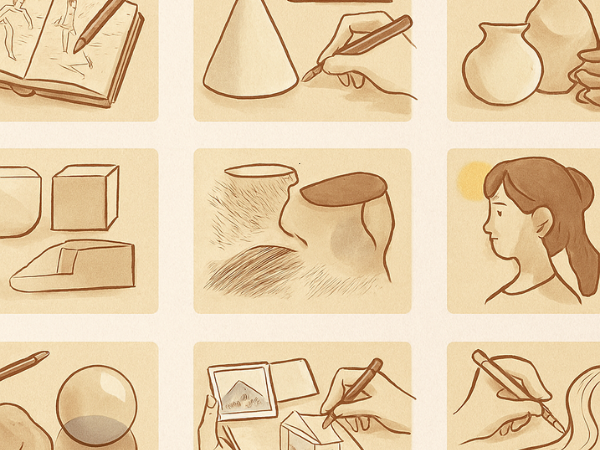This artwork isn’t just a visual treat; it’s a deep exploration of despair, struggle, and the complexity of the human experience. In this blog post, you’ll uncover the story behind Courbet’s brushstrokes and the thoughts that fueled his creativity. You’ll learn about the historical context that shaped this piece and how it reflects the artist’s own inner turmoil.
By the end, you’ll not only appreciate this painting more but also gain insights into your own emotional landscape. Stay with us as we delve into the layers of meaning and passion within “The Desperate Man. ” You might just find that this artwork resonates with you in unexpected ways.
Courbet’s Life And Influence
A Deep Dive into Courbet The Desperate Man reveals much about the artist’s life and impact. Gustave Courbet was a key figure in the Realism movement. His works reflect his beliefs and struggles. Understanding his life helps us appreciate the emotions in The Desperate Man.
Courbet’s Early Life
Gustave Courbet was born in 1819 in Ornans, France. He came from a wealthy family. This background gave him access to education and art. He studied in Paris, where he faced the art world’s challenges.
His early works showed a passion for realism. They depicted ordinary people and everyday scenes. This was different from the romantic styles of his time.
Struggles And Achievements
- Courbet faced criticism for his style.
- He challenged traditional art views.
- His work often reflected social issues.
Despite struggles, he gained respect. Courbet exhibited his works in major salons. His bold approach inspired many artists after him.
Impact On Art Movements
Courbet’s influence reached far beyond his lifetime. He inspired the Impressionists and later artists. They admired his focus on realism.
| Art Movement | Influence from Courbet |
|---|---|
| Impressionism | Focus on light and everyday life |
| Modernism | Challenging traditional art forms |
His techniques and subject choices changed art. They encouraged artists to explore new themes.
Legacy
Gustave Courbet’s legacy is significant. His dedication to realism paved the way for future artists. His works, including The Desperate Man, continue to resonate. They reveal deep emotions and personal struggles.
Today, Courbet is remembered as a pioneer. He shaped the course of modern art.
The Desperate Man: Key Features
A Deep Dive into Courbet’s The Desperate Man reveals the intense emotions and artistic techniques used by the painter. This artwork, created in 1843, showcases the raw human experience. Let’s explore the key features that define this compelling piece.
The Desperate Man is notable for several distinct characteristics. Each feature enhances its emotional impact and artistic value. Below are the main aspects that stand out:
- Expressive Face: The face of the man is filled with anguish. This expression invites viewers to feel his despair.
- Bold Brushwork: Courbet uses thick, visible brush strokes. This technique adds texture and depth.
- Contrast of Light and Shadow: Strong contrasts highlight the man’s emotions. This use of chiaroscuro creates drama.
- Color Palette: Dark colors dominate the painting. These colors evoke feelings of sadness and urgency.
- Composition: The focus is solely on the man. This isolation emphasizes his desperate state.
Each feature contributes to the overall narrative of the painting. Courbet captures a moment of deep human experience. The viewer feels the weight of the man’s emotions.
Emotional Depth
The emotional depth of The Desperate Man is profound. Courbet’s portrayal resonates with many. Key elements include:
- Facial Expression: The anguish is palpable.
- Body Language: The man’s posture conveys tension.
- Isolation: The lack of background enhances focus on his plight.
This emotional intensity makes the painting relatable. Viewers can connect with the feelings of despair.
Artistic Techniques
Courbet employs various artistic techniques in this work. These techniques enhance the painting’s overall impact. Noteworthy methods include:
| Technique | Description |
|---|---|
| Impasto | Thick application of paint creates texture. |
| Chiaroscuro | Strong contrast between light and dark. |
| Realism | Focus on real human emotions and experiences. |
These techniques give the painting a unique quality. They invite the viewer to engage more deeply with the artwork.
Symbolism
Symbolism plays a crucial role in The Desperate Man. Elements within the painting carry deeper meanings. Important symbols include:
- The Face: Represents the struggle of the human spirit.
- The Hands: Suggests a plea for help or understanding.
- The Darkness: Symbolizes despair and uncertainty.
These symbols enhance the narrative. They allow for varied interpretations by viewers.
Through these key features, Courbet’s The Desperate Man stands as a powerful exploration of emotion and technique. The painting invites reflection and connection, leaving a lasting impression.

Emotional Expression In Art
A Deep Dive into Courbet’s The Desperate Man reveals much about the power of emotional expression in art. Art is not just about beauty. It conveys feelings. Artists capture emotions in their work. Gustave Courbet’s painting is a perfect example. It shows deep despair and inner struggle. Let’s explore how Courbet uses emotion to connect with viewers.
Understanding Emotional Expression
Emotional expression in art is crucial. It communicates feelings that words often cannot. This expression can vary widely. Each artist has a unique way of showing emotion. Some common methods include:
- Color choices
- Brush strokes
- Facial expressions
- Body language
Courbet uses these methods effectively in The Desperate Man. His painting captures raw emotion. The viewer can feel the intense struggle of the subject.
Courbet’s Use Of Color
The colors in The Desperate Man play a vital role. Dark colors reflect despair. Bright colors can show hope. Courbet chooses deep tones to emphasize sadness. This choice enhances the emotional impact.
| Color | Emotion |
|---|---|
| Dark Brown | Despair |
| Muted Green | Isolation |
| Flesh Tones | Humanity |
Facial Expressions And Body Language
Courbet captures strong emotions through facial expressions. The subject’s face shows anguish. The eyes reflect a deep inner turmoil. Body language also tells a story. The tense posture reveals struggle and desperation.
This combination creates a powerful connection with the audience. Viewers can relate to the emotions displayed. They feel the weight of despair.
The Impact On The Viewer
Emotional expression in The Desperate Man impacts viewers profoundly. It invites them to reflect on their feelings. Many people can relate to feelings of desperation. Courbet’s work encourages empathy.
Art becomes a mirror. It reflects human emotions. This connection makes the painting timeless. Audiences will continue to feel its impact for years to come.
Symbolism And Meaning
A Deep Dive into Courbet’s The Desperate Man reveals much about the artist’s intent. The painting is rich in symbolism and meaning. Understanding these elements helps us appreciate its emotional depth and historical context.
Symbolism Of The Figure
The figure in The Desperate Man is a powerful symbol. It reflects the artist’s inner turmoil and struggles. His facial expression shows despair and desperation.
- Eyes wide open: They convey shock and fear.
- Hands in disarray: They suggest a loss of control.
- Facial features: They reveal anguish and intensity.
Use Of Color
Color plays a significant role in this artwork. Courbet uses dark tones to create a somber mood.
| Color | Symbolism |
|---|---|
| Dark Brown | Struggle and suffering |
| Black | Despair and hopelessness |
| Muted Tones | Emotional weight |
Facial Expression And Body Language
The facial expression and body language of the figure are crucial. They communicate deep emotions without words.
- Furrowed brow: Indicates worry and distress.
- Open mouth: Suggests a silent scream.
- Tense posture: Shows the pressure of despair.
The Context Of The Era
This painting reflects the broader context of the 19th century. The era was marked by political upheaval and social change. Courbet’s work captures the essence of human struggle.
- Romanticism influenced Courbet.
- Realism emerged as a response to idealism.
- Art became a medium for social commentary.
Comparison With Other Works
A Deep Dive into Courbet’s The Desperate Man reveals much about the artist’s style and emotions. Comparing this painting with other works helps us understand its unique place in art history. Courbet’s raw expressionism stands out against the realism of his time. This comparison highlights his innovative approach and emotional depth.
Comparison With Other Works By Courbet
Courbet created many notable pieces. Each work reflects his bold style. Here are some key comparisons:
- The Stone Breakers (1849): This painting shows laborers with a focus on social realism. It contrasts with the intense emotion of The Desperate Man.
- A Burial at Ornans (1849): This piece captures a funeral scene. It showcases Courbet’s detailed realism, unlike the personal turmoil seen in The Desperate Man.
- The Painter’s Studio (1855): This work displays Courbet’s artistic philosophy. It combines self-portraiture with a broader commentary on art, contrasting with the intimate expression in The Desperate Man.
Comparison With Other Artists
Courbet’s style differs from other artists of his time. Here are two notable comparisons:
| Artist | Style | Notable Work |
|---|---|---|
| Édouard Manet | Impressionism | Olympia |
| Jean-François Millet | Realism | The Gleaners |
Manet focused on light and color. His work has a more casual feel than Courbet’s intense emotion. Millet highlighted peasant life with compassion. His scenes are more serene compared to the turmoil in The Desperate Man.
Thematic Comparisons
Different themes emerge in Courbet’s works. Here are some common themes:
- Human Struggle: The Desperate Man shows inner conflict. This theme appears in other works, like The Stone Breakers.
- Nature: Courbet often painted landscapes. This theme contrasts with the emotional focus in The Desperate Man.
- Social Commentary: Many of Courbet’s works reflect social issues, similar to A Burial at Ornans.
Techniques And Style
A deep dive into Courbet’s The Desperate Man reveals much about his techniques and style. This painting showcases his unique approach to realism. Courbet aimed to capture raw emotion and human experience. His methods contribute to the painting’s intense impact.
Brushwork And Texture
Courbet used bold brush strokes. This technique adds a sense of energy to the painting. The texture is rough and dynamic. It creates movement in the figure. The contrast between smooth and textured areas captures the viewer’s eye.
- Impasto technique: Thick layers of paint create depth.
- Short, quick strokes: Suggest urgency and emotion.
- Layering: Builds richness in color.
Color Palette
The color palette is dark and moody. Courbet often used earthy tones. Shades of brown, black, and gray dominate the canvas. These colors evoke feelings of despair and intensity. Bright highlights contrast with the shadows, emphasizing emotion.
| Color | Emotion |
|---|---|
| Brown | Warmth and depth |
| Black | Despair and darkness |
| Gray | Melancholy |
Composition And Form
The composition draws the viewer’s eye to the figure’s face. The placement of the figure is central and confrontational. Courbet emphasized the facial expression, which is crucial to the painting’s narrative.
- Central positioning creates focus.
- Diagonal lines suggest movement and tension.
- Use of space enhances emotional impact.
Emotional Expression
Facial expressions convey deep feelings. The figure shows anguish and desperation. Courbet captures a moment of raw emotion. This technique invites viewers to connect personally with the artwork.
Courbet’s techniques and style in The Desperate Man demonstrate his commitment to realism. His brushwork, color choices, and composition all contribute to a powerful emotional experience.




